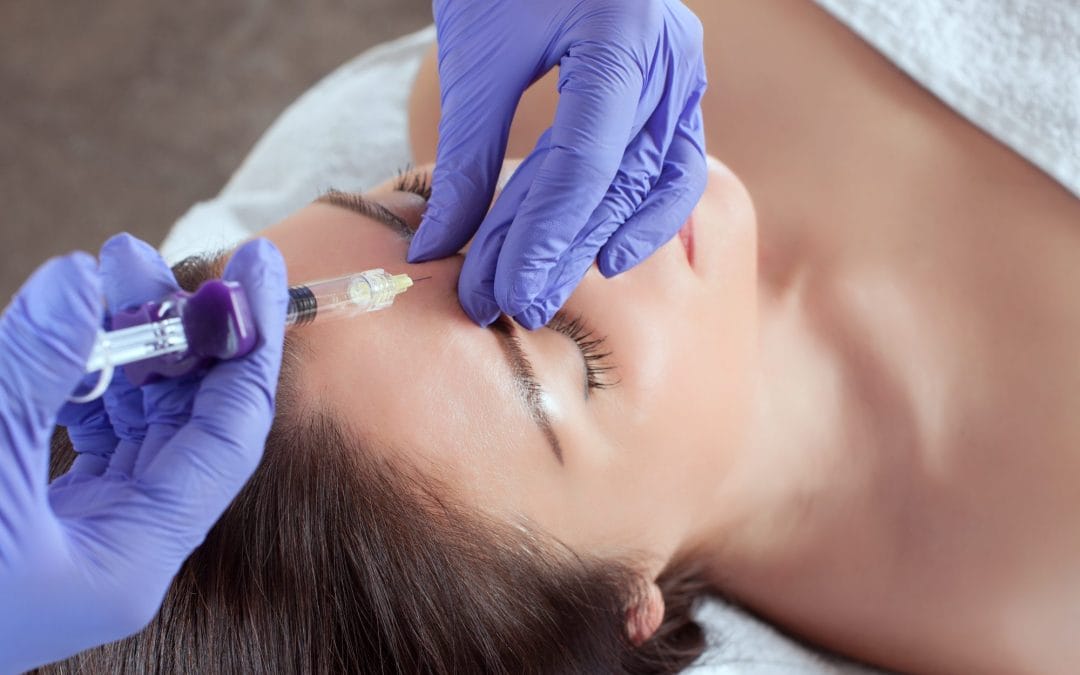Botox has become synonymous with youth and beauty. It is a non-surgical cosmetic procedure that has gained immense popularity over the years due to its ability to reduce the signs of aging and improve overall appearance. But Botox is not just limited to its cosmetic benefits. It has also found its place in medical treatments for various conditions. In this blog, we will explore the incredible rise of Botox as an anti-aging solution and its many uses beyond aesthetics.
Understanding Botox and Its Rise to Popularity
Botox, or botulinum toxin, is a neurotoxin that affects the nerves and causes muscle weakening. It was initially used for medical purposes to treat conditions such as muscle spasms and crossed eyes. However, its cosmetic benefits soon became apparent. With the introduction of Botox cosmetic, it became a popular choice for reducing the appearance of facial wrinkles and frown lines. Today, Botox is one of the most widely known brands of botulinum toxin injections and is used by millions of people worldwide.
The Science Behind Botox
The science behind Botox lies in its ability to block nerve signals to muscles. When Botox is injected into specific muscles, it prevents the release of acetylcholine, a chemical messenger that triggers muscle contraction. As a result, the injected muscles are unable to contract, leading to a temporary relaxation and smoothing of wrinkles and fine lines. The effects of Botox are not permanent and typically last for three to six months. It is important to note that Botox only affects the muscles in the area where it is injected and does not spread to other parts of the body.
Evolution of Botox in Cosmetic Procedures
Botox has revolutionized the field of cosmetic procedures, particularly in the treatment of facial wrinkles. In the past, invasive surgical procedures were the primary options for reducing the signs of aging. However, with the introduction of Botox, individuals now have a non-surgical alternative that is less expensive, requires minimal downtime, and provides natural-looking results. Botox has become a staple in the world of cosmetic enhancements, offering a safe and effective solution for reducing frown lines, crow’s feet, and other facial wrinkles. Its popularity continues to grow as more people seek out non-invasive ways to maintain a youthful appearance.
How Botox Works as an Anti-Aging Treatment
Botox works as an anti-aging treatment by targeting the muscles that cause wrinkles. When injected into the skin, it specifically targets the muscles responsible for frown lines, crow’s feet, and other facial wrinkles. By blocking the nerve signals to these muscles, Botox prevents them from contracting and forming wrinkles. The injection site may appear smoother and less wrinkled, giving the face a more youthful appearance. The effects of Botox vary depending on the individual, but typically last for three to six months.
The Process of Administering Botox
The process of administering Botox involves a series of injections directly into the muscles being treated. The healthcare provider will first clean the treatment area and may apply a topical numbing agent to minimize any discomfort. Using a fine needle, the provider will inject small amounts of Botox into the targeted muscles. The number of injections and the amount of Botox used will depend on the specific treatment plan. The procedure is typically quick and relatively painless, with most patients describing a mild stinging or pressure sensation. After the injections, patients can usually resume their normal activities immediately, although it is important to avoid rubbing or putting pressure on the treated area for a few hours.
Areas of the Face Targeted by Botox
Botox can be used to target various areas of the face, reducing the appearance of wrinkles and improving overall facial aesthetics. Some common areas treated with Botox include:
- Crow’s feet lines at the corners of the eyes
- Frown lines between the eyebrows
- Forehead lines
- Lines around the mouth
- Chin wrinkles
- Jawline definition
Botox injections can be customized to address specific concerns and achieve desired results. The healthcare provider will determine the appropriate injection sites and dosage based on the individual’s facial anatomy and aesthetic goals. It is important to consult with a qualified and experienced healthcare provider to ensure safe and effective treatment.
Benefits of Botox Beyond Aesthetics
While Botox is commonly associated with its cosmetic benefits, it offers a range of therapeutic uses beyond aesthetics. This versatile treatment has been approved by the FDA for treating various medical conditions. Botox has shown effectiveness in providing relief for overactive bladder, chronic migraines, and cervical dystonia. It can also be used to manage excessive sweating and muscle stiffness. The therapeutic benefits of Botox make it a valuable tool in improving the quality of life for individuals with these conditions.
Therapeutic Uses of Botox
Botox has been approved by the FDA for several therapeutic uses. Some of the medical conditions that can be treated with Botox include:
- Overactive bladder: Botox can help reduce urinary incontinence by relaxing the bladder muscles, resulting in fewer episodes of urgency and leakage.
- Chronic migraines: Botox injections can help prevent migraines by blocking the release of certain chemicals in the brain that contribute to migraine attacks.
- Cervical dystonia: Botox can be used to treat abnormal neck muscle contractions, reducing pain and improving neck posture.
- Muscle weakness: Botox can temporarily weaken specific muscles, helping to manage conditions such as upper limb spasticity and certain types of muscle spasms.
- Neck pain: Botox injections into the neck muscles have been found to provide relief for chronic neck pain. It is important to consult with a healthcare provider to determine if Botox is an appropriate treatment option for these medical conditions.
Botox for Migraine Relief
Botox has been approved by the FDA for the treatment of chronic migraines. It is believed that Botox works by blocking the release of certain chemicals in the brain that play a role in triggering migraines. When injected into specific areas of the head and neck, Botox can help prevent or reduce the severity of migraine attacks. However, it is important to note that Botox is not effective for all types of headaches and migraines. It is recommended for individuals who experience migraines on 15 or more days per month. It is also important to discuss the potential benefits and risks of Botox for migraine relief with a healthcare provider.
Preparing for Your First Botox Treatment
If you are considering Botox as an anti-aging treatment, it is important to prepare for your first appointment. Here are a few tips to ensure a successful and comfortable experience:
- Research and choose a qualified healthcare provider who specializes in Botox treatments.
- Schedule a consultation to discuss your goals and expectations.
- Provide a complete medical history and inform your healthcare provider about any medications or supplements you are taking.
- Follow any pre-treatment instructions provided by your healthcare provider, such as avoiding certain medications or alcohol.
- Be prepared to ask questions and communicate your concerns during the consultation.
Choosing the Right Practitioner
Choosing the right healthcare provider for Botox injections is crucial for a successful and safe treatment. It is important to opt for a qualified practitioner who has experience in administering Botox and understands your individual needs and goals. They will recommend the appropriate dose based on your medical conditions and desired outcomes.
When selecting a practitioner, consider their qualifications, experience, and reputation. Ask for recommendations from trusted sources or research online reviews. A skilled practitioner will take the time to assess your needs, answer any questions or concerns, and provide personalized care. Always prioritize safety and choose a practitioner who follows proper protocols and practices.
What to Expect During the Consultation
During the Botox consultation, the healthcare provider will evaluate the treatment area and discuss the desired outcome. They will explain the process of Botox injections, including the use of a fine needle to inject small amounts of Botox into the muscles. Depending on the issue, multiple injections may be given in different spots.
It’s important to have realistic expectations and understand that Botox is not a permanent solution. The effects last for three to six months and the treatment needs to be repeated regularly to maintain the desired results. The healthcare provider will also discuss possible side effects, such as pain, swelling, or bruising at the injection site. They will provide aftercare instructions to minimize these side effects and ensure the best outcome.
Schedule a Botox Consultation Today
In essence, Botox has emerged as a revolutionary solution for combating the signs of aging and addressing various medical conditions. Understanding the science behind Botox, its therapeutic benefits, and debunking common myths can help demystify its application. By choosing a qualified practitioner and following proper aftercare, individuals can achieve optimal results. Real success stories and combining Botox with other treatments showcase its versatility. With tailored treatment plans and expert guidance, Botox offers not just aesthetic enhancements but also potential relief from migraines and other health issues. Embrace the possibilities of Botox to rejuvenate both your appearance and well-being. Contact us at Dentistry of West Bend for more today!


Recent Comments